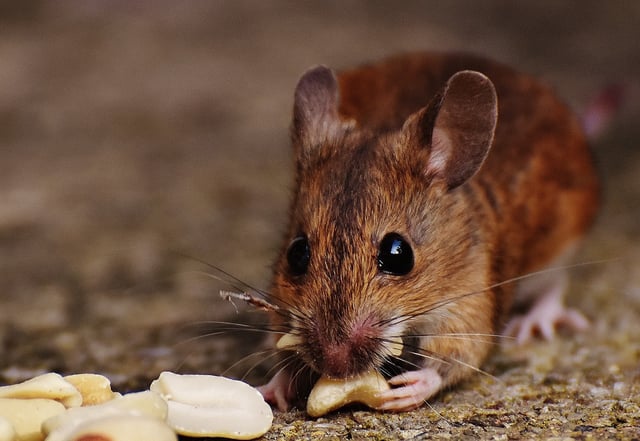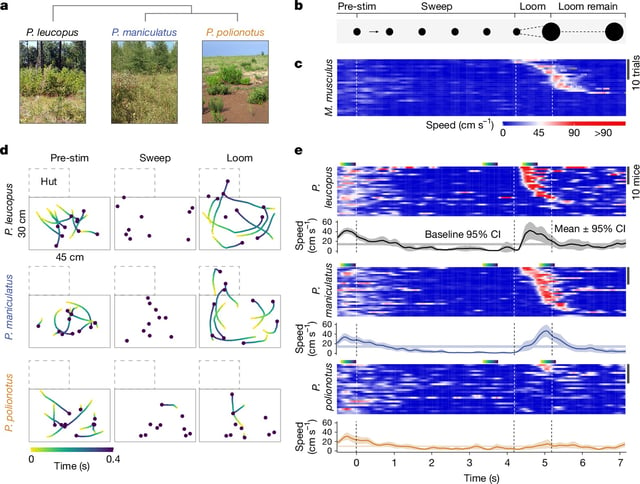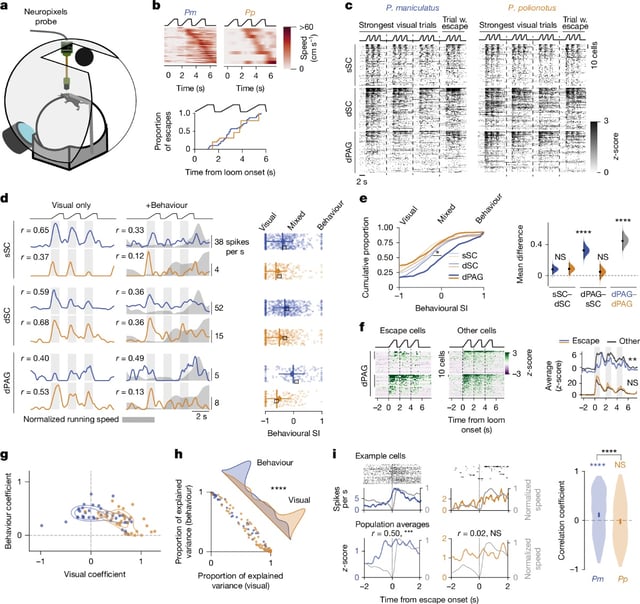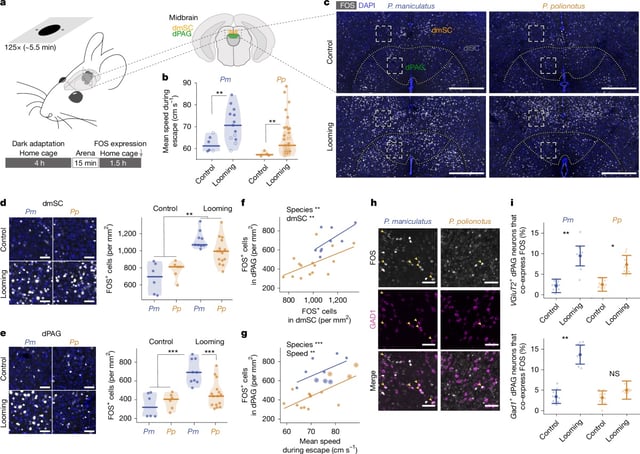Overview
- Peromyscus maniculatus from dense prairies instinctively dashes for cover when sensing aerial threats, whereas open-field P. polionotus freezes in place under the same stimuli.
- Immunohistochemical and electrophysiological analyses found that dPAG activation is about 1.5 times higher in the fleeing species than in its freezing counterpart.
- Optogenetic stimulation of dPAG neurons elicited escape behavior even without predator cues, while chemogenetic suppression caused one species to adopt its cousin’s defensive strategy.
- Both visual looming and auditory threat signals produced identical sensory inputs but diverged only at the central dPAG processing stage, confirming downstream neural adaptation.
- These findings validate a mechanism whereby natural selection fine-tunes existing neural circuits to optimize habitat-specific survival strategies rather than creating new pathways.



